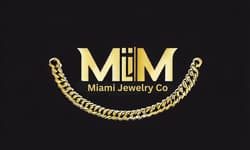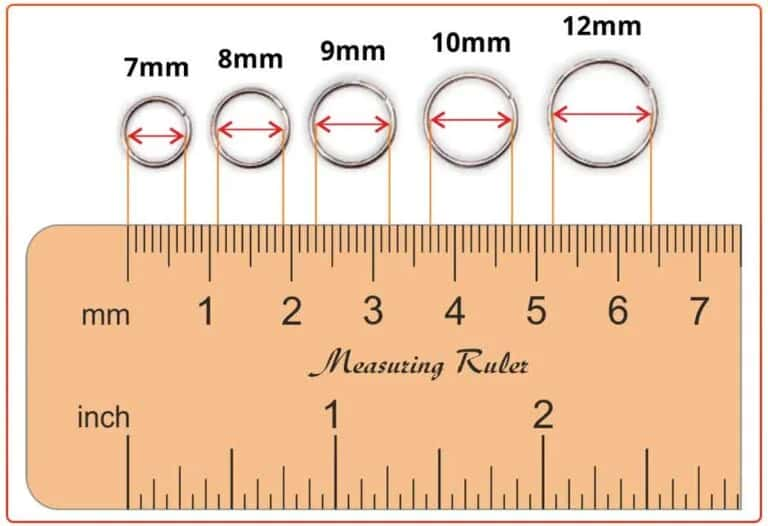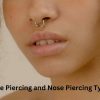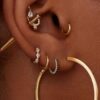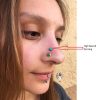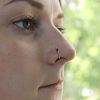Nose Piercing
What Gauge Is a Nose Piercing: Nose Ring Sizes A Comprehensive Guide
Nose piercings are a fantastic way to express personal style, but they come with their own set of considerations, one of which is the piercing gauge. Whether you’re contemplating getting your nose pierced, or you already have one and are considering changing your jewelry, understanding the concept of piercing gauges is crucial.
Let’s delve into the details.
Read: Septum Ring Sizes
Contents
Key Takeaways
- Nose piercings often use a 20 or 18-gauge needle.
- The “gauge” means the size or thickness of the needle.
- A lower gauge number means a thicker needle and a bigger hole.
- A standard earring is usually a 20 or 22-gauge.
- If the hole is too big or small, it can cause problems.
- Always ask a piercing professional for advice on gauge size.
- Your body’s healing can change its size over time.
- Choosing the right jewelry size helps keep your piercing healthy.
Understanding Piercing Gauges
What Is a Piercing Gauge?
In the world of body piercings, the term ‘gauge’ refers to the thickness of the piercing needle and the jewelry that fits into the piercing hole. The gauge number corresponds inversely with the thickness — the higher the number, the thinner the jewelry, and vice versa. It’s essential to get it right to ensure both the health of your piercing and your overall satisfaction.
Common Piercing Gauges
Piercing gauges range from 18 to 00, with 18 being the smallest and 00 the largest. While 14 and 16 gauges are common for areas like the belly button or the earlobe, nose piercings typically utilize a smaller gauge.
Related: 8mm Vs. 10mm Nose Ring
Why Gauge Matters in Nose Piercings
Comfort and Healing
The gauge can significantly impact how comfortable the piercing is and how long it takes to heal. Larger gauges, which result in bigger piercings, may take longer to heal and may also cause more discomfort. On the other hand, smaller gauges, while more comfortable, may not provide the aesthetic you desire.
Aesthetic and Jewelry Choices
The gauge of your nose piercing will directly influence your choice of jewelry. If you prefer dainty studs or rings, you’ll want to stick to a smaller gauge. On the other hand, if you want larger or more decorative pieces, you may require a larger gauge.
Understanding Gauge Sizes in Piercings
Detailed knowledge about gauge sizes in piercings is essential whether you’re a piercing enthusiast or a newbie. The gauge size represents the thickness of the barbell that goes through your piercing. It’s noteworthy that the thicker the barbell, the lower the gauge size. Therefore, a 12G barbell is thicker than a 20G barbell.
Let’s further break down the specifics for each type of piercing, keeping in mind that the sizes listed here are standard, and may vary depending on personal preferences and professional advice.
Related:
- Nose Rings Hoops
- Double Hoop Nose Ring
- High Nostril Piercing
- How to Choose the Best Nose Ring According to Face Shape
- How to Wear Half Hoop Nose Ring
- How to Put in a Nose Ring with a Hook
- How to Take Out Nose Stud with Flat Back
Standard Gauge Sizes for Different Piercings
| Piercing Type | Standard Gauge | Standard Length |
|---|---|---|
| Belly / Navel Ring | 14G | 3/8″ , 7/16″ |
| Nose Piercing | 16G, 18G | 1/4″ , 5/16″ |
| Tongue Piercing | 14G | 5/8″ |
| Cartilage Piercing | 16G, 18G | 3/16″ , 1/4″ , 5/16″ |
| Eyebrow Piercing | 16G (14G is also commonly used) | 1/4″ , 5/16″, 3/8″ |
| Labret Lip Rings | 14G or 16G | 1/4″ , 5/16″, 3/8″ |
| Monroe Piercing | 16G | 1/4″ , 5/16″, 3/8″ |
| Nipple Piercing | 14G | 3/8″ , 1/2″ |
| Tragus / Helix / Rook / Conch / Daith | 20G, 18G | 3/16″, 1/4″ , 5/16″, 3/8″ |
| Septum | 14G (16G is also commonly used) | 3/8″, 7/16″, 1/2″, 5/8″ |
| Ear | 20G , 18G | – |
Measuring the Length of Your Piercing Jewelry
The length of your piercing jewelry refers to the wearable portion of the barbell that goes through your piercing. It’s usually measured from the top to the bottom of the straight barbell and doesn’t include any additional ornaments, like balls or charms.
How to Measure Jewelry Diameter
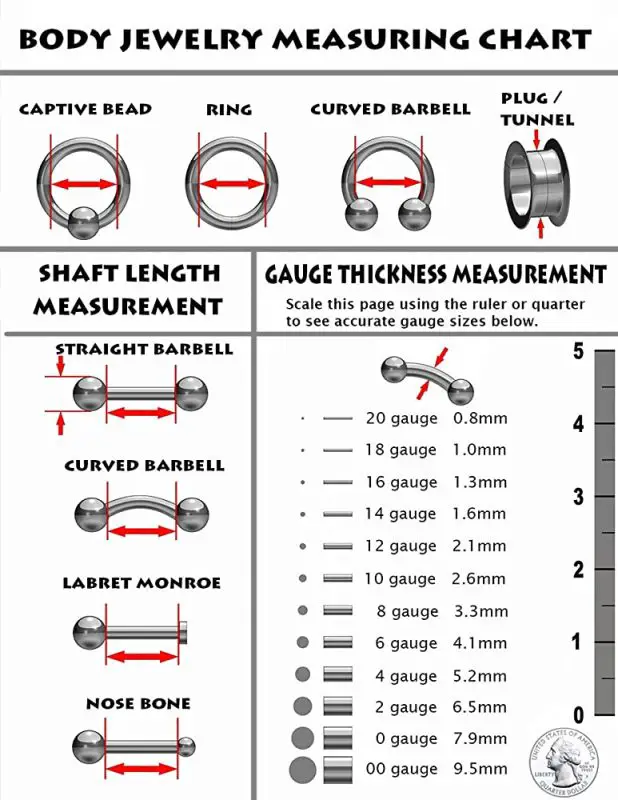
The diameter is used for measuring round barbells such as hoops and circular barbells. This is measured from the widest point of the circle, from one inner edge to another.
Let’s break down how to measure different types of jewelry:
Captive Bead Rings (CBRs):
Measure the largest inside diameter of the circle.
Straight Barbells:
Measure the length of a barbell between the two balls along the length of the bar.
Circular Barbells/Horseshoe Barbells:
Measure the largest inside diameter.
Curved Barbells & Belly Button Rings:
Measured in a straight line from the inner length between the two balls.
Nose Rings:
For nose twists (also known as screws or studs), measure from the base of the ball to the beginning of the twist. Nose bones are measured to the end of the shaft before the beaded tip. Nose fishtails are measured from the base of the ball to the end of the barbell.
Labrets, Lip Rings, Cartilage & Tragus Earrings:
Measured from the base of the ball to the top of the flat disc.
Plugs, Tunnels, and Earlets:
An ear plug’s wearable length is measured from the inside edge of the horizontal line.
Here’s a conversion chart to help you visualize the thickness and length of your piercing jewelry:
Gauge to Millimeters Conversion
Pro tip: Start with a smaller gauge for your first nose piercing. It’s easier to stretch later than to shrink if you change your mind.
Popular Nose Piercing Gauges
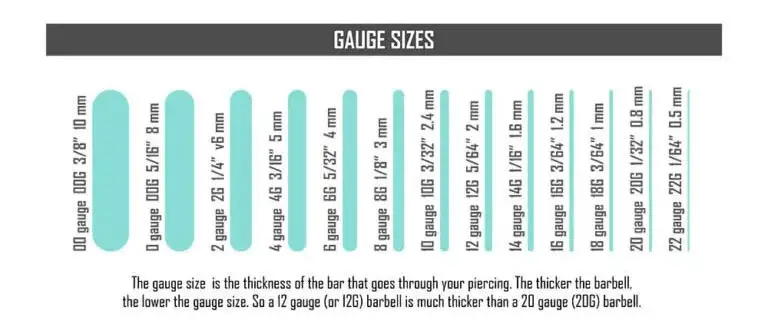
18 Gauge
An 18 gauge is the most common size for a nose piercing. It provides a perfect balance between comfort and the variety of jewelry available. If you’re not sure which size to go with, this might be a good starting point.
20 Gauge
A 20 gauge is a bit smaller, suitable for those who prefer minimalistic jewelry. It’s also a great choice for those who are new to body piercing, as it may be more comfortable and heal quicker than a larger gauge.
16 Gauge
The 16 gauge is less common for nose piercings but could be used for those wanting to wear larger jewelry pieces. Remember, a piercing of this size will take a bit longer to heal and may cause more discomfort during the healing process.
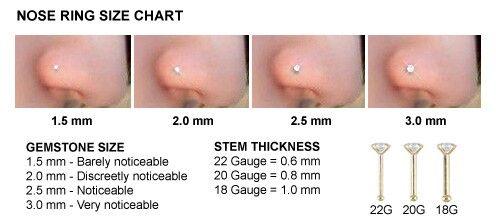
Choosing the Right Gauge
Consultation with a Professional Piercer
Choosing the right gauge is a decision best made with the guidance of a professional piercer. They can assess your nose’s shape and size and your pain tolerance and healing ability. Plus, they can give valuable advice about which size would work best for the type of jewelry you prefer.
Personal Preferences and Jewelry Selection
Personal preference plays a crucial role in choosing the gauge. Consider the type of jewelry you wish to wear. Do you prefer the look of larger, more ornate pieces, or are you inclined towards smaller, more understated jewelry? Your answer to this question will guide your decision on the right gauge for your nose piercing.
Caring for Your Nose Piercing
Piercing Aftercare
Once you’ve chosen the right gauge and got your nose pierced, proper aftercare is crucial to prevent infections and ensure a smooth healing process. This involves cleaning the area with a saline solution, avoiding swimming in public pools and refraining from touching the piercing with dirty hands.
Changing Your Nose Jewelry
You should wait until your piercing is fully healed before attempting to change your jewelry. When you do decide to change it, remember to use jewelry of the same gauge as your piercing. Using a larger gauge could cause pain and potentially re-open the wound, while a smaller gauge might cause the hole to shrink.
Resources:
FAQs
Are nose piercings 20 or 18-gauge?
Nose piercings are typically done with either a 20 or 18-gauge needle. These are the most common sizes for nose jewelry and are recommended by most professional piercers.
Is 16 gauge normal for nose piercing?
A 16 gauge is not considered the standard for nose piercings. While it’s possible to use this size, it’s larger and may cause more discomfort and longer healing times. Always consult with a piercing professional to determine the best gauge for you.
Is 20 gauge standard nose piercing?
Yes, a 20 gauge is often considered a standard size for nose piercings. It’s the same thickness as most standard earring posts, making it a comfortable choice for many people.
Is 18G or 20G smaller?
When it comes to gauges, the larger the number, the smaller the size. So, an 18G needle is larger than a 20G needle. Remember, it’s always best to consult with a professional piercer to determine the best size for your nose piercing.
Can I put an 18g piercing in a 20G hole?
Generally, you should not put an 18g piercing in a 20g hole. An 18g piercing is slightly larger than a 20g hole, which can cause discomfort or even tearing. If you wish to wear an 18g piercing, you may need to stretch your piercing slightly. Always seek advice from a professional piercer to avoid complications.
What is the most common nose ring size?
The most common nose ring size is usually 20g or 18g. These sizes are the most comfortable and widely used for nose piercings, offering a great variety of jewelry choices. However, the appropriate size can vary depending on individual anatomy and personal preference, so it’s important to consult with a piercing professional for the best fit.
Can I change the gauge of my nose piercing?
Yes, but it’s advisable to consult with a professional piercer to prevent any potential damage or pain.
Does the gauge size affect the healing process?
Yes, larger gauges may take longer to heal and may cause more discomfort during the healing process.
What is the smallest gauge size for a nose piercing?
The smallest gauge typically used for nose piercings is 20, but sizes can vary depending on personal preference and professional advice.
Conclusion
Understanding the gauge of a nose piercing is an essential part of the piercing process. It impacts everything from the initial piercing procedure to the healing process and the type of jewelry you can wear. Consulting with a professional piercer and considering your personal preferences will help you choose the best gauge for your nose piercing. With the right knowledge and care, you can ensure that your nose piercing is a positive addition to your personal style.

Camila Luna is a passionate jewelry enthusiast and content creator at Miami Jewelry Co. With a focus on providing high-quality, Miami-style jewelry, Camila and her team specialize in a wide range of jewelry that includes bracelets, necklaces, earrings, and more
